_We may earn revenue from the products available on this page and participate in affiliate programs. Learn more ›
_
Best Overall
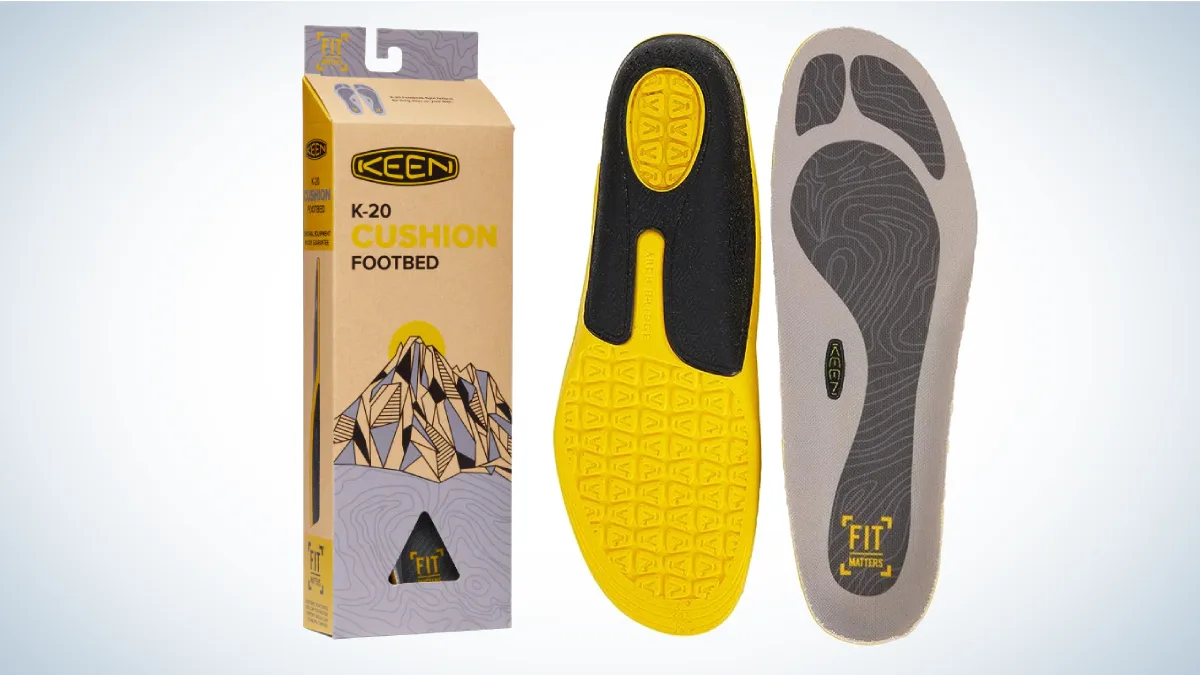
Keen K-20 Outdoor Plus Insoles
Best Arch Support

Superfeet Hike Cushion Insoles
Best Budget
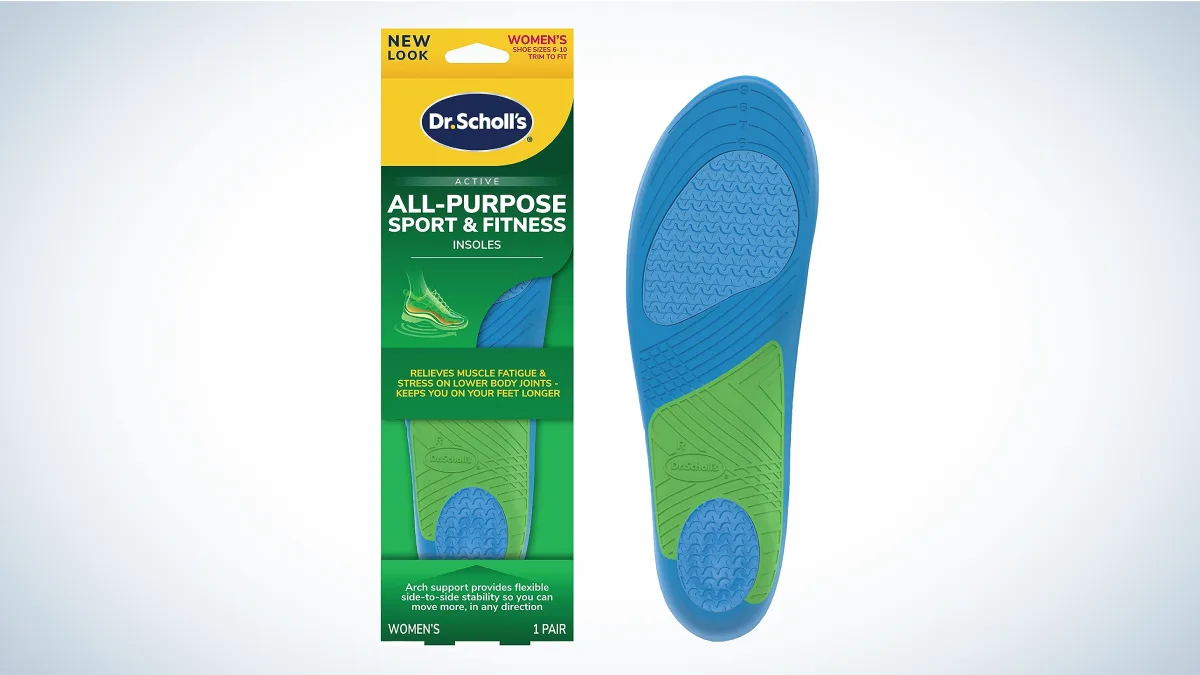
Dr. Scholl’s Sport & Fitness All-Purpose Comfort Insoles
Few things cut an outdoor adventure short like achy feet—which is why comfortable, well-fitting insoles for hiking are so important. Even if you have the best hiking boots
, they may not offer the arch support or cushioning your feet need to tackle long trails. So if you’re in a pattern of heading back to the car early to give your feet some relief, don’t be so quick to toss out your hiking shoes
—it may just be time to try some insoles.
For higher impact activities such as trail running or hiking on rocky, technical terrain, you’ll want insoles that feature more cushion for better shock absorption. As for the level of midfoot support? It depends on if you have high arches or flat feet. And you’ll certainly want a well-cushioned and structured heel cup if you’re dealing with any tendonitis or plantar fasciitis. With all of these factors in mind, we tested and reviewed several top brands—including Keen, Superfeet, and Dr. Scholl’s—to find the best insoles for hiking so you can go further on the trail.
Best Overall: Keen K-20 Outdoor Plus Insoles
Best Arch Support: Superfeet Hike Cushion Insoles
Best for Hiking Boots: Sidas 3Feet Outdoor Mid Insoles
Best Cushioned: PowerStep Original Insoles
Best Budget: Dr. Scholl’s Sport & Fitness All-Purpose Comfort Insoles
How We Picked the Best Insoles for Hiking
To test out the comfort and fit of each insole, I wore the same pair of trail running shoes for hiking. From the start, I took note of how easy or difficult it was to cut the new insoles to the correct shape and slide them inside of my shoes. Then, I went for a hike out on smooth to slightly rocky terrain to see how my feet felt after a couple of miles. Were they tired and sore, or ready for more distance?
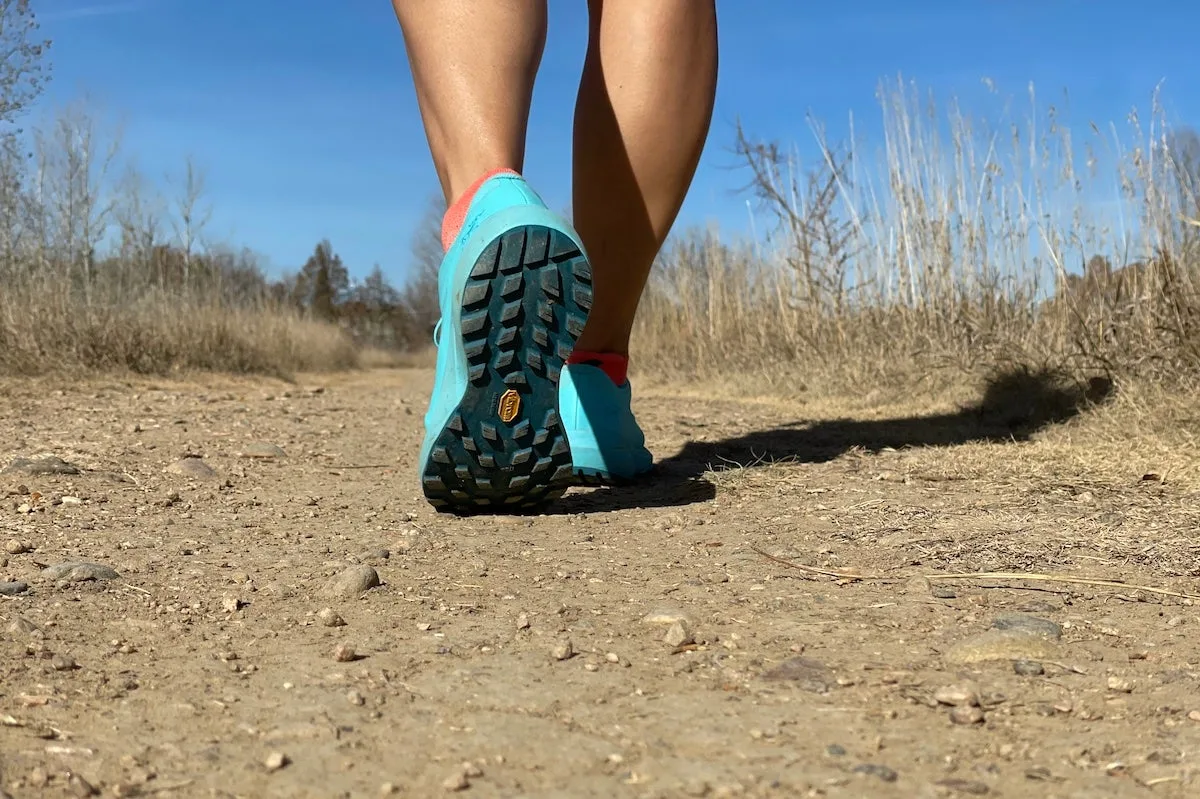
I spent hours on each pair of insoles to determine the best of the best. Paige Triola
To really break them in, I wore them on errands for the remainder of the day. Throughout the day, I observed how my heels, arches, and toes were feeling and which aspects of the insoles stood out, both positively and negatively. Because I can’t speak for all wearers, I took opinions from other hikers into consideration along with my own experience in order to come to a more fair conclusion.
Best Insoles for Hiking: Reviews and Recommendations
Best Overall: Keen K-20 Outdoor Plus Shoe Insole
Best Overall

Specs
Sizes: Small – X-Large (men), Small – Large (women)
Material: Foam
Foot Types: Medium arches
Pros
Easy to cut and insert into shoes
Fits very comfortably to shape of foot
Arch support was just right
Cons
Less cushioning in forefoot may be problematic for some
The Keen K-20 Outdoor Plus Shoe Insole earns first place for its springy and impact-absorbing foam materials, comfortable fit to the shape of your foot, and anatomical heel cap that cradles your heel for hours of pain-free hiking. These insoles claim to provide neutral arch support, meaning they can comfortably accommodate a range of foot types. I observed this while wearing them—my high arches typically demand a good deal of support, and the structure of the Keen insoles rose to the occasion. With each step, my feet sank comfortably into their supportive arches, and at no point did I feel fatigue or discomfort on my hike.
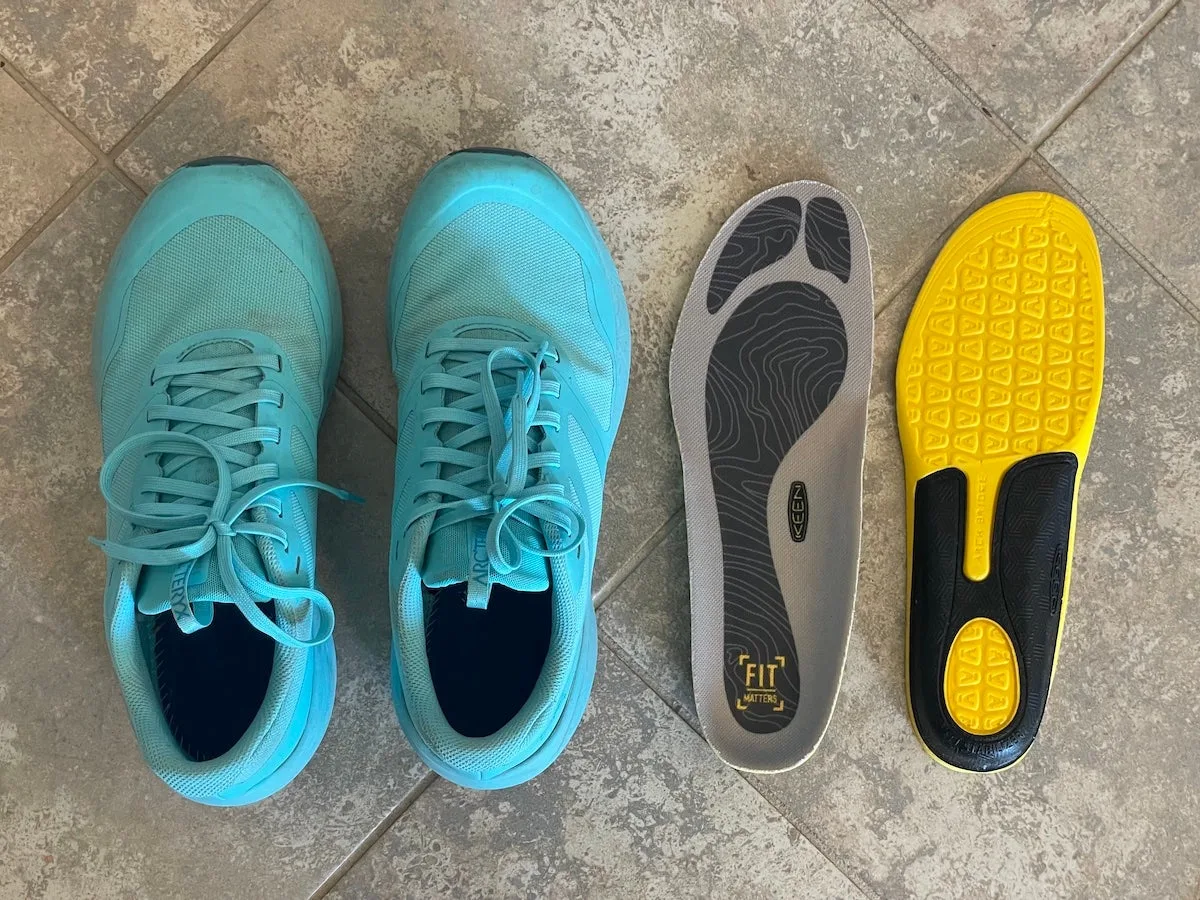
These Keen insoles were my favorite of the bunch. Paige Triola
While the insoles provided ample cushioning for heels and arches, I was wary of the thinner structure in the forefoot. Personally, I felt that the material had enough squish to keep my toes from getting sore, but wearers who prefer more cushioning might wish for extra thickness from toe to heel.
Best Arch Support: Superfeet Hike Cushion
Best Arch Support

Specs
Sizes: 2.5 -13 (men), 4.5-14 (women)
Material: Foam and plastic
Foot Types: High arches
Pros
Extra thickness means more cushion for feet
High arches are well supported with this insole’s structure
Cons
Thickness of insole makes it tough to place in tight-fitting footwear
Firmer around toe area
Designed to offer long-lasting comfort and pain relief, these Superfeet hiking insoles cater to high arches and feature thicker material for extra shock absorption. Whether hiking the trails or running errands, I noticed that my feet felt comfortable and supported all day. My heels and arches were especially pleased with the extra cushion. Note: The high arch profile was perfect for me but will very likely be too much for wearers with flatter feet.
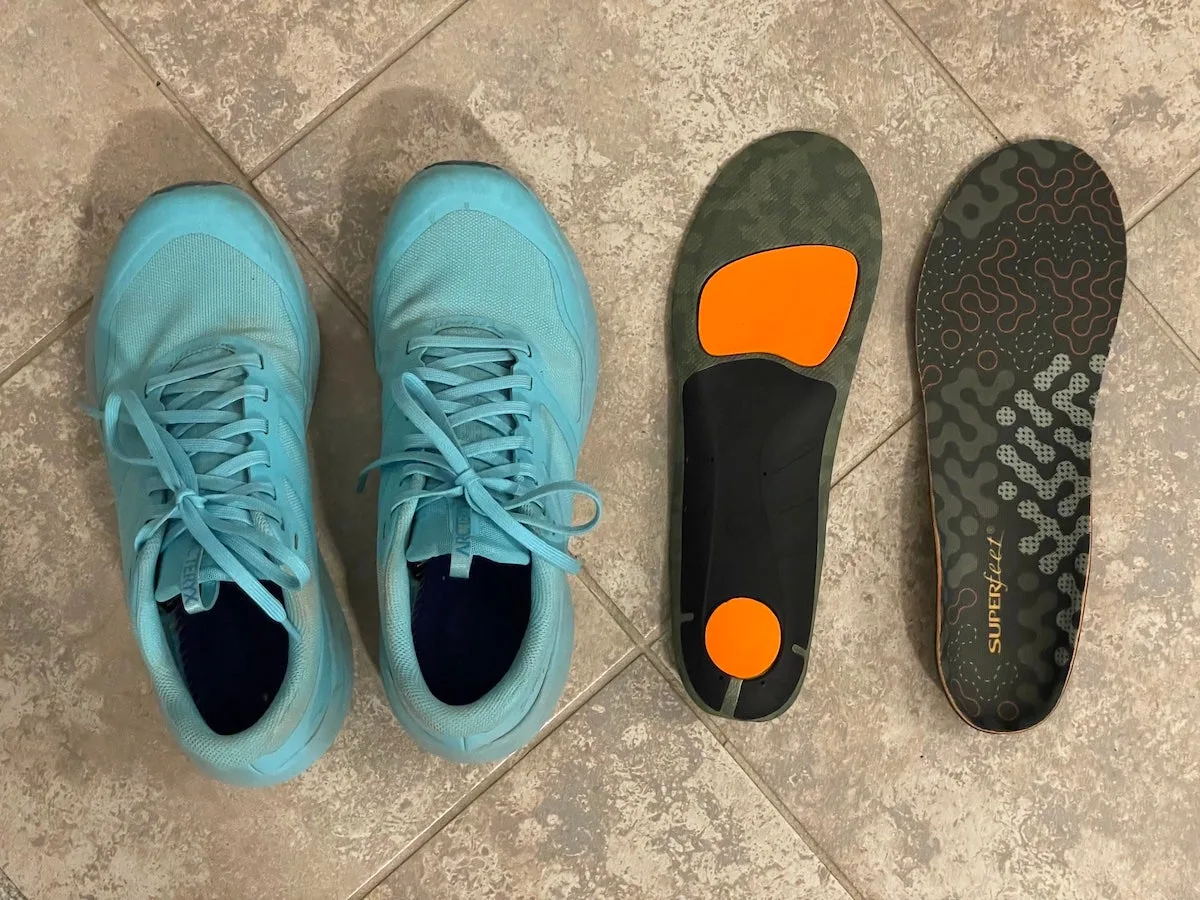
If you have high arches, the Superfeet Hike Cushion insoles are your best bet. Paige Triola
There seems to be less cushioning in the toe area, which may be off-putting for those who don’t like firm insoles. However, I found that there was just enough give that my toes didn’t get sore after hours of walking in these. Because of the overall thickness of the material, this insole fits best in roomy footwear, so it’s not the best choice for tight-fitting shoes.
Best for Hiking Boots: Sidas 3Feet Outdoor Mid
Best for Hiking Boots
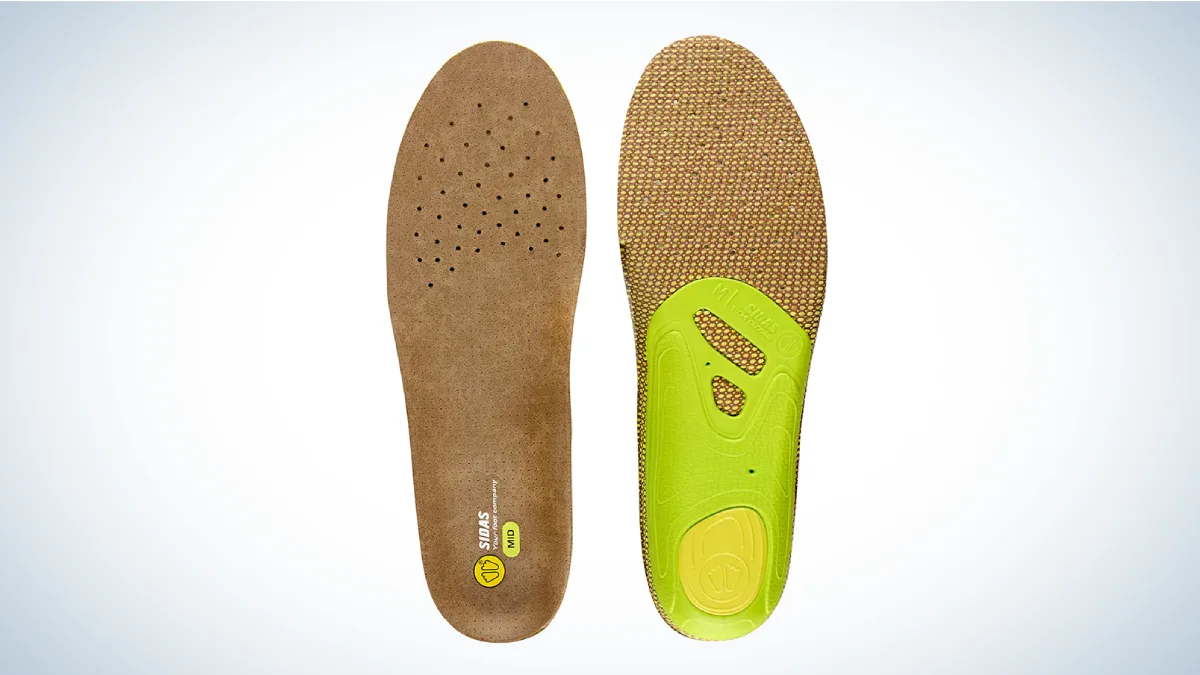
Specs
Sizes: XS-XXL (unisex)
Material: EVA rubber
Foot Types: Medium arches
Pros
Very easy to fit and slide into shoe
Medium arch supports all types of feet
Offers a more firm feel on top with springy rubber foot pad beneath
Cons
Lack of cushion in forefoot makes toes sore after long hikes
For hikers who prefer a firmer step rather than cloud-like cushioning, the Sidas 3Feet Outdoor Mid is a great fit. The top of the insole features soft, suede-like microfibers molded to have a shallow yet comfortable heel cup and a gentle slope for neutral arch support. Both my heels and arches felt perfectly supported even without thick, squishy cushioning. I also observed that the perforated material of the insole provides extra breathability so sweaty toes are not an issue.
Because they’re so easy to put in and take out, we like them for hiking boots
. They add a little bit more oomph to even the most comfortable pair of boots.
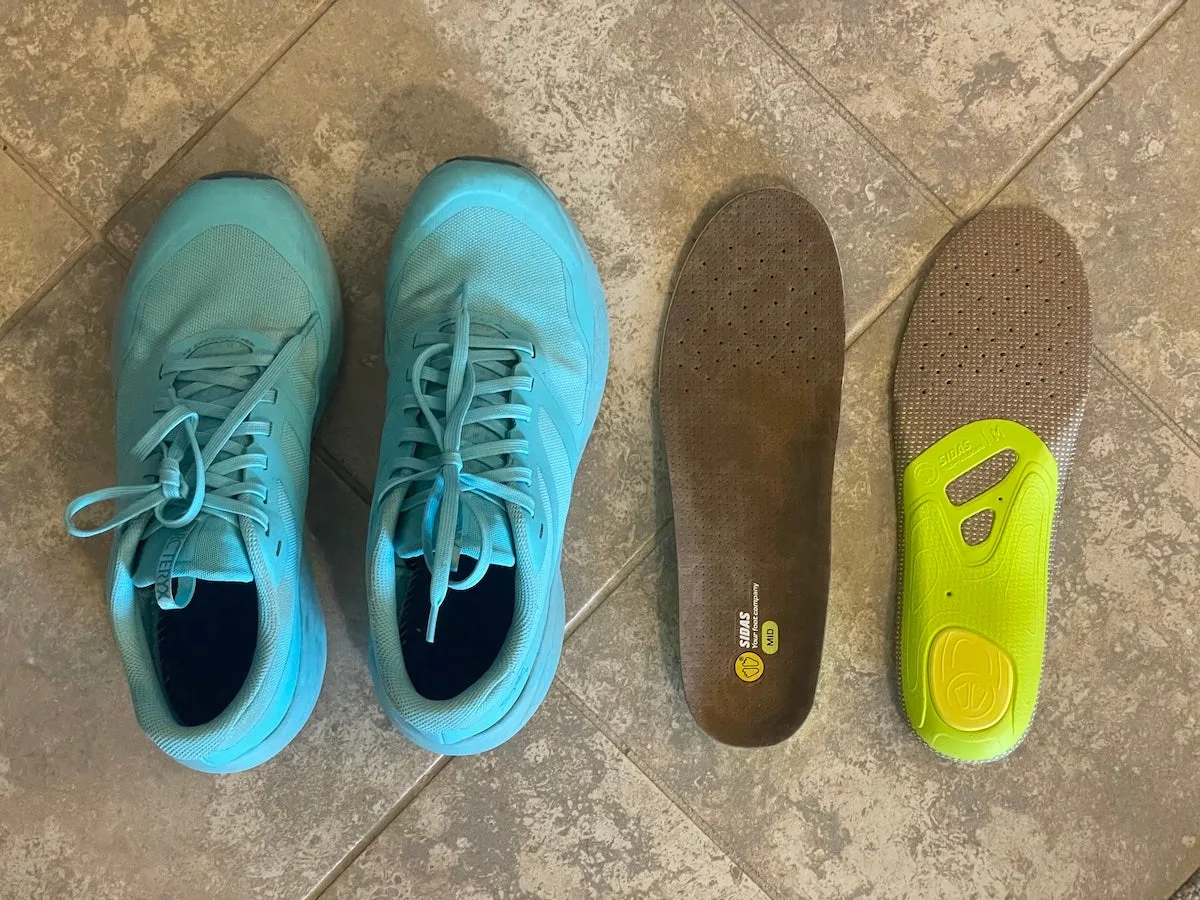
While I tried the Sidas insoles in trail shoes, they perform just as well in hiking boots. Paige Triola
While the minimal cushioning in the heel and midfoot area was enough to make my steps feel springy and pain-free, the thin and stiff toe portion of the insoles fell flat, so to speak. I could feel the impact clearly in the ball of my foot and my toes became sore after a couple of miles, making this insole a better choice for short, casual hikes.
Best Cushioned: PowerStep Original Insoles
Best Cushioned
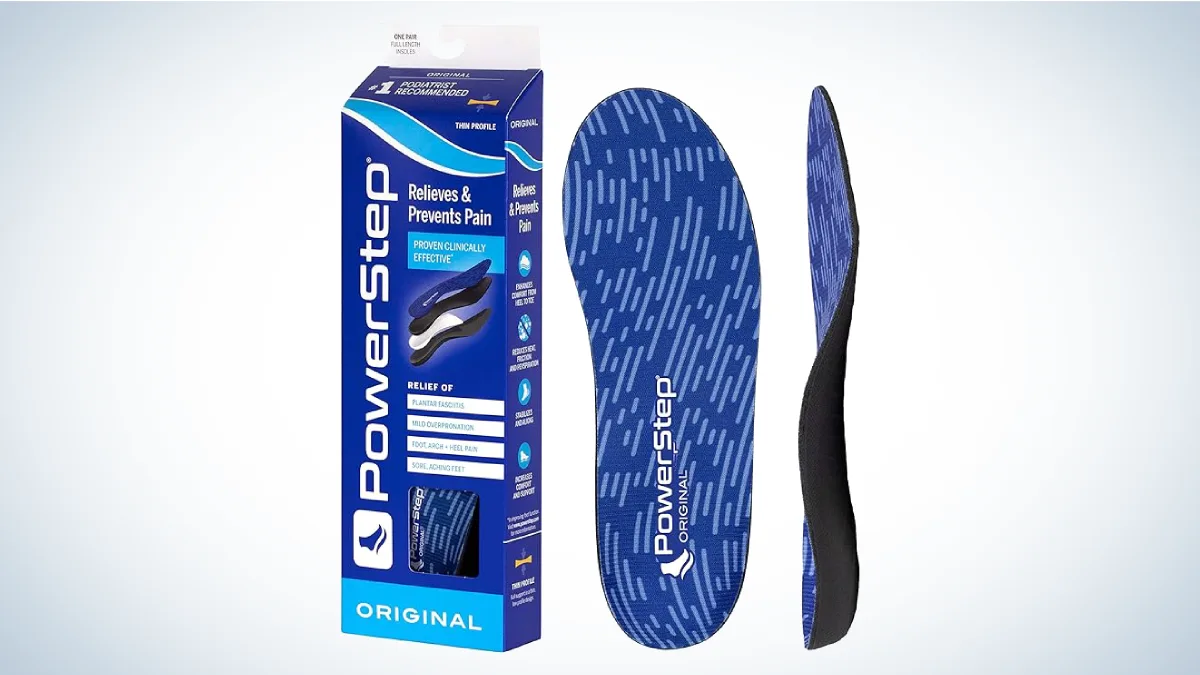
Specs
Sizes: 3-16+ (men), 5-12 (women)
Material: Polyester
Foot Types: Neutral arches
Pros
Provide noticeable pain relief
Thin enough to fit in tighter shoes while still providing cushion
Cons
More expensive
Arch may be too high for some
With ample cushioning, the PowerStep Original Insoles are ideal for anyone who struggles with foot or knee pain while hiking. The insoles significantly relieve achy, painful feet and joints, making them worth the expense. Well-fitting and comfortable, they balance just the right amount of cushion with a firmness that provides stability when walking or hiking.
The neutral arches are supportive enough for spending long hours on your feet. While they work for people with flat feet, they may be better suited for those with mid to high arches. What’s really cool about these insoles is that they boast an odor-control fabric that helps wick away sweat and funk, so your toes stay fresh while you’re on the go.
Best Budget: Dr. Scholl’s Sport & Fitness All-Purpose Comfort Insoles
Best Budget

Specs
Sizes: 8-14 (men), 6-10 (women)
Material: Gel
Foot Types: Medium arches
Pros
Squishy gel material offers excellent cushion
Long-lasting comfort throughout all-day wear
Soft and structured heel cup
Cons
Gel bottoms make it a bit tough to slide them into shoes
These gel insoles impressed me from the start. For a low-priced option, Dr. Scholl’s provides a level of comfort I would expect from a more high-end product. The grooves on the bottom of the insole added extra guidelines to follow as I held the insole from my shoe on top and cut around it. While walking outside, the supportive heel cups kept my heels from getting achy. The gel material offered a slight squish that softened impact, and my feet were grateful. Even the arch support was exceptional.
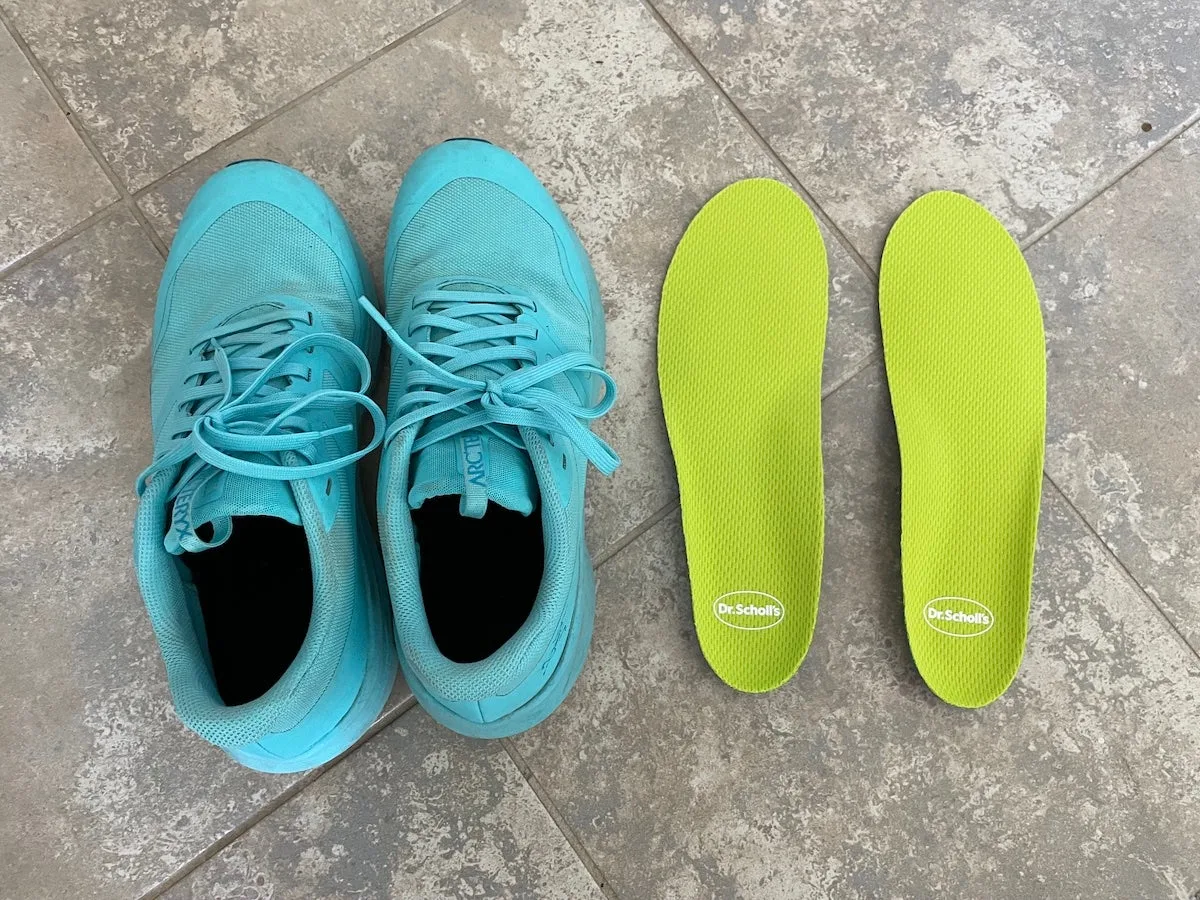
I loved almost everything about these Dr. Scholl’s insoles—including the affordable price. Paige Triola
It was a bit trickier to insert these insoles as the gel bottoms’ stickiness made them tough to slide into the shoe. Otherwise, I couldn’t find any other faults after wearing these on a two-mile hike and errands for the rest of the day—they truly provided all-day comfort. Overall, these Dr. Scholl’s insoles offer excellent value for such an affordable product.
What to Consider When Choosing Insoles for Hiking
Arch Support
Check the packaging or online description closely: the level of arch support, whether low, high, or neutral, should be stated somewhere. Those with flat feet will want to avoid insoles that boast high arch support, and those with high arches will get little help from inserts that are pancake-flat. If in doubt, try a pair of insoles that advertise neutral arch support, as those tend to be a comfortable middle ground for a range of foot types.
Firmness
While some people prefer squishy gel inserts in their shoes to cushion each step, others may need firm support and a more precise fit, particularly if you’re dealing with issues such as plantar fasciitis. It’s a good idea to pay attention to how the insoles that came with your shoes feel. If they’re hard, unyielding, and leave you with sore feet after just an hour, you’ll want something softer.
Comfort
How comfortable hiking insoles are can be subjective, so we recommend reading a range of reviews (like this one!) before making a purchase. Pay attention to what people are noting about the level of arch support, firmness, fit, and materials. If the majority of wearers are singing the praises of a pair of insoles for their firm, springy material, but you prefer insoles with softer cushioning, check out a different product. This is especially important if you’re dealing with any foot issues, such as a stress fracture or plantar fasciitis, that require extra support or cushion in certain areas. You know your feet best, so choose the insoles that accommodate your specific needs.
FAQs
Q: How long do hiking insoles last?
Hiking insoles typically last between six months and a year, but it depends on how often you’re using them. If you’re logging miles every day—especially on trails where your footwear takes a good bit of abuse—you will likely need to replace them sooner.
Q: Should I put insoles in my hiking shoes?
If the insoles that came with your hiking shoes feel great on your feet, there’s no need to replace them. It’s only necessary to put new insoles in your shoes if you’re experiencing discomfort, which could be coming from improper arch support or an undesirable level of cushion or firmness. The issue might even be due to an injury, so consult a podiatrist if new insoles aren’t helping to alleviate pain.
Q: What is the difference between inserts and insoles?
Inserts can be defined as a range of products that one can put inside a shoe to provide extra support or cushioning. They can fully replace or lay on top of the shoe’s own insole, or they can be a small addition: like a cup that slides into the heel of the shoe or a small pad or liner that is specifically for the arch or ball of the foot. Insoles are full-sized inserts that cover the entire sole of the foot. So, technically, insoles are a type of insert, but an insert can be other things besides an insole.
Q: Can hiking insoles be washed?
Some insoles can be washed. It varies by model, so always check the product’s washing instructions first. Many will tell you to wash the insoles by hand with soap or mild detergent and water—perhaps using an old toothbrush to scrub out stains—and allow to air dry.
Best Insoles for Hiking: Final Thoughts
Best Overall: Keen K-20 Outdoor Plus Insoles
Best Arch Support: Superfeet Hike Cushion Insoles
Best for Hiking Boots: Sidas 3Feet Outdoor Mid Insoles
Best Cushioned: PowerStep Original Insoles
Best Budget: Dr. Scholl’s Sport & Fitness All-Purpose Comfort Insoles
The best insoles for hiking are easy to cut to size and slide into your shoe, staying firmly in place as you move. They provide solid arch support and cushioning for your entire foot. Ideally, you should be able to hike for hours without foot pain slowing you down or plaguing you afterward. To improve the comfort or fit of your hiking shoes, and to potentially relieve pain from issues such as plantar fasciitis, consider purchasing one of these tried and true insoles.
Why Trust Us
For more than 125 years, Field & Stream has been providing readers with honest and authentic coverage of outdoor gear. Our writers and editors eat, sleep, and breathe the outdoors, and that passion comes through in our product reviews. You can count on F&S to keep you up to date on the best new gear. And when we write about a product—whether it’s a bass lure or a backpack—we cover the good and the bad, so you know exactly what to expect before you decide to make a purchase.





